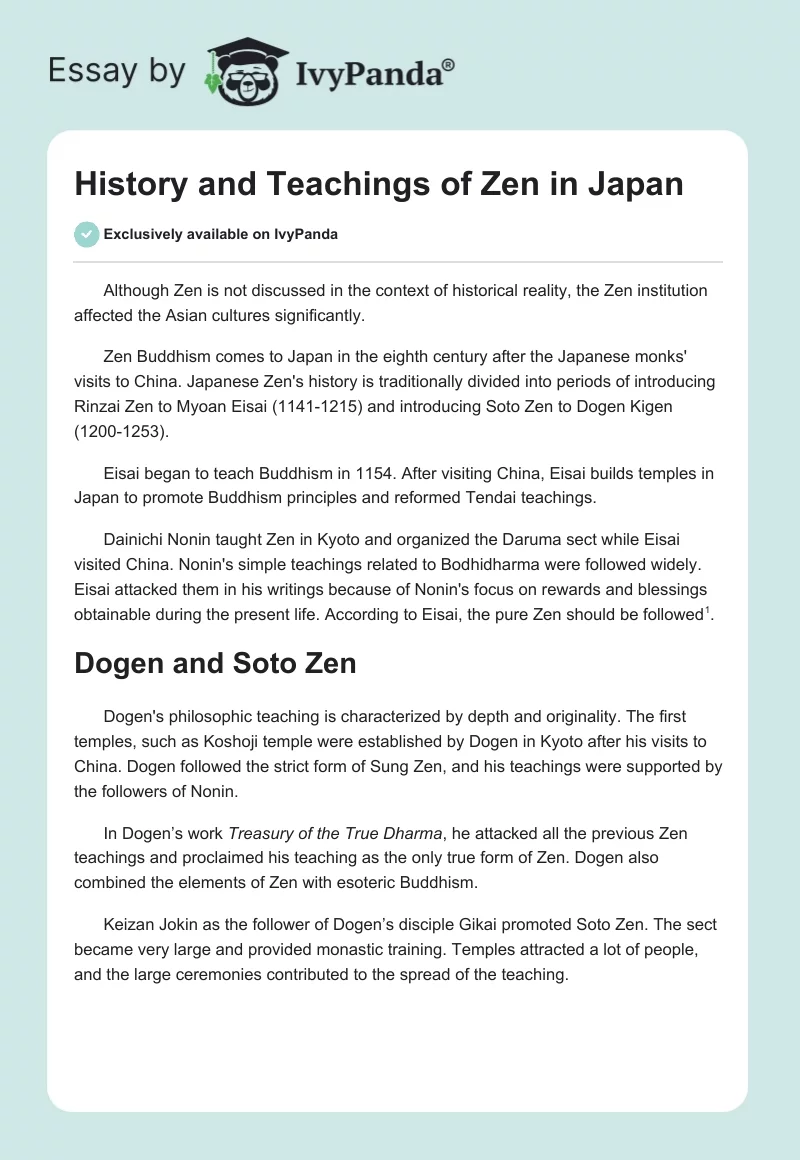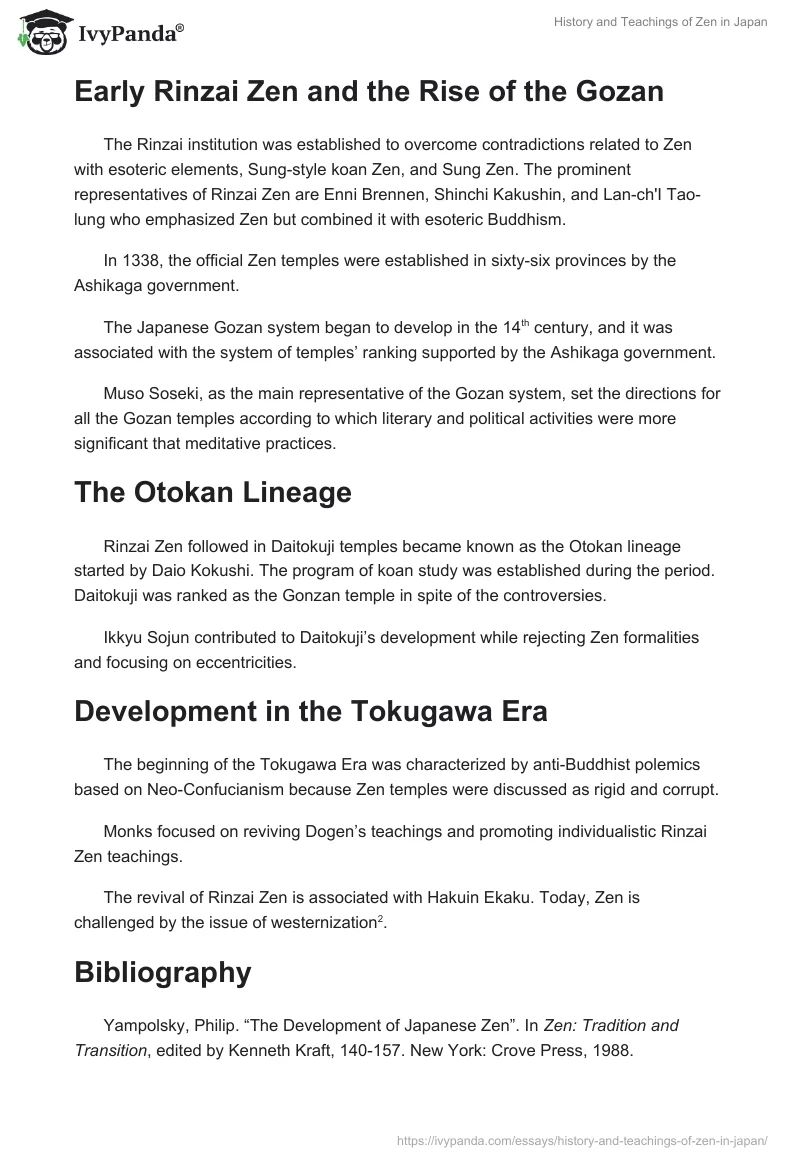Although Zen is not discussed in the context of historical reality, the Zen institution affected the Asian cultures significantly.
Zen Buddhism comes to Japan in the eighth century after the Japanese monks’ visits to China. Japanese Zen’s history is traditionally divided into periods of introducing Rinzai Zen to Myoan Eisai (1141-1215) and introducing Soto Zen to Dogen Kigen (1200-1253).
Eisai began to teach Buddhism in 1154. After visiting China, Eisai builds temples in Japan to promote Buddhism principles and reformed Tendai teachings.
Dainichi Nonin taught Zen in Kyoto and organized the Daruma sect while Eisai visited China. Nonin’s simple teachings related to Bodhidharma were followed widely. Eisai attacked them in his writings because of Nonin’s focus on rewards and blessings obtainable during the present life. According to Eisai, the pure Zen should be followed.
Dogen and Soto Zen
Dogen’s philosophic teaching is characterized by depth and originality. The first temples, such as Koshoji temple were established by Dogen in Kyoto after his visits to China. Dogen followed the strict form of Sung Zen, and his teachings were supported by the followers of Nonin.
In Dogen’s work Treasury of the True Dharma, he attacked all the previous Zen teachings and proclaimed his teaching as the only true form of Zen. Dogen also combined the elements of Zen with esoteric Buddhism.
Keizan Jokin as the follower of Dogen’s disciple Gikai promoted Soto Zen. The sect became very large and provided monastic training. Temples attracted a lot of people, and the large ceremonies contributed to the spread of the teaching.
Early Rinzai Zen and the Rise of the Gozan
The Rinzai institution was established to overcome contradictions related to Zen with esoteric elements, Sung-style koan Zen, and Sung Zen. The prominent representatives of Rinzai Zen are Enni Brennen, Shinchi Kakushin, and Lan-ch’I Tao-lung who emphasized Zen but combined it with esoteric Buddhism.
In 1338, the official Zen temples were established in sixty-six provinces by the Ashikaga government.
The Japanese Gozan system began to develop in the 14th century, and it was associated with the system of temples’ ranking supported by the Ashikaga government.
Muso Soseki, as the main representative of the Gozan system, set the directions for all the Gozan temples according to which literary and political activities were more significant that meditative practices.
The Otokan Lineage
Rinzai Zen followed in Daitokuji temples became known as the Otokan lineage started by Daio Kokushi. The program of koan study was established during the period. Daitokuji was ranked as the Gonzan temple in spite of the controversies.
Ikkyu Sojun contributed to Daitokuji’s development while rejecting Zen formalities and focusing on eccentricities.
Development in the Tokugawa Era
The beginning of the Tokugawa Era was characterized by anti-Buddhist polemics based on Neo-Confucianism because Zen temples were discussed as rigid and corrupt.
Monks focused on reviving Dogen’s teachings and promoting individualistic Rinzai Zen teachings.
The revival of Rinzai Zen is associated with Hakuin Ekaku. Today, Zen is challenged by the issue of westernization.
Bibliography
Yampolsky, Philip. “The Development of Japanese Zen”. In Zen: Tradition and Transition, edited by Kenneth Kraft, 140-157. New York: Crove Press, 1988.


